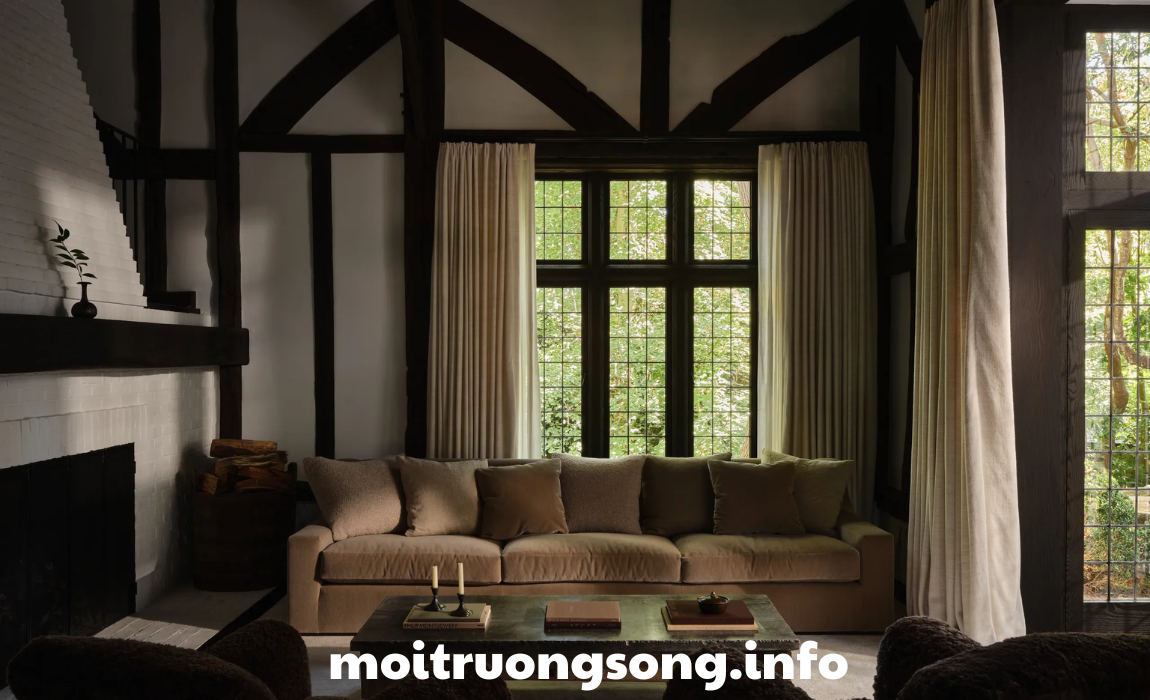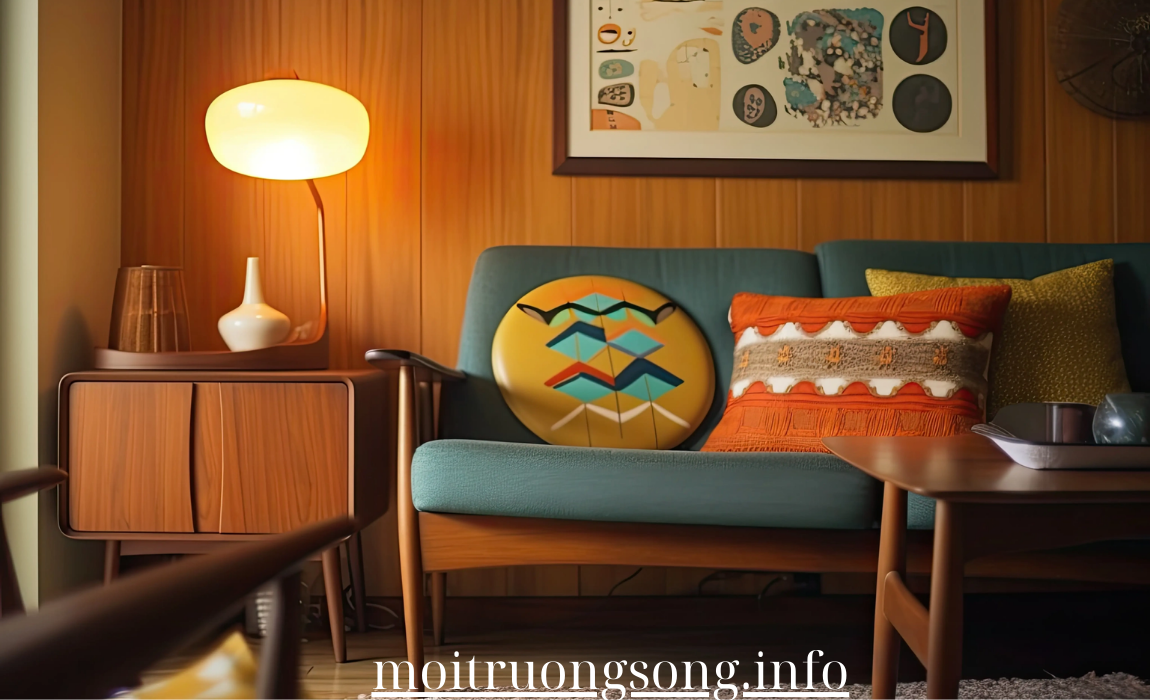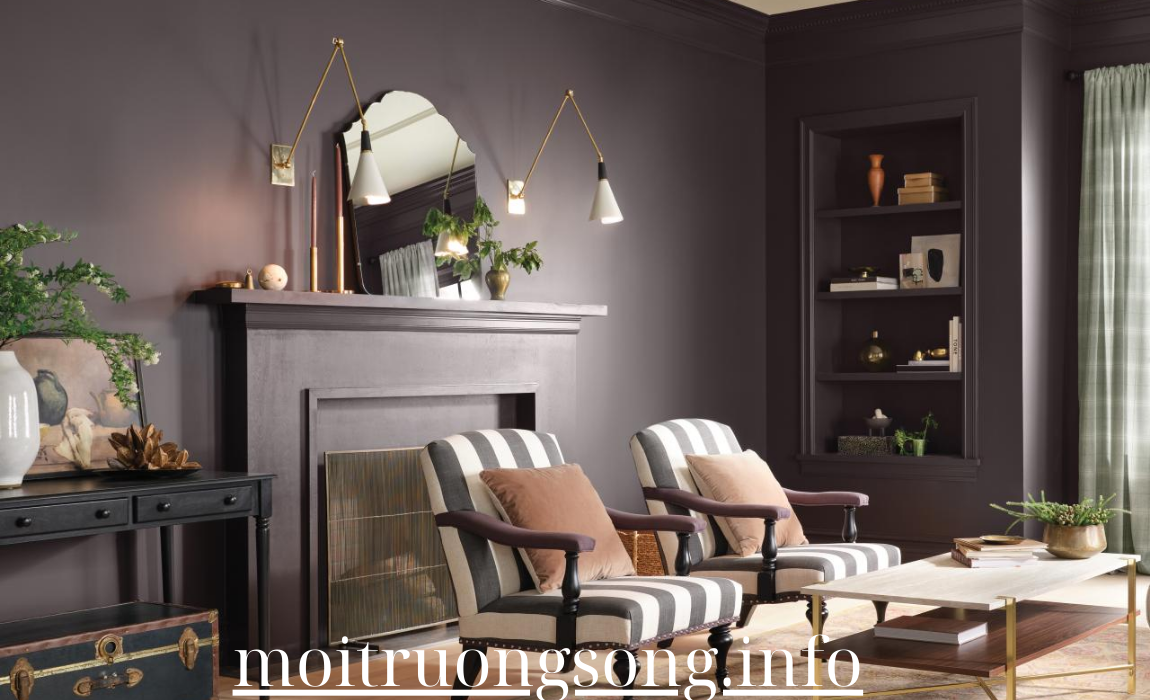Retro-inspired design is making a stylish comeback, blending vintage charm with modern elegance to create spaces that feel both nostalgic and sophisticated. The key to achieving this look lies in the careful selection of retro color themes that evoke timeless appeal while adding depth and personality to your home. By incorporating classic hues from the mid-century era and updating them with contemporary touches, you can design a space that feels effortlessly chic. Here’s how to use elegant retro color themes to transform your interiors.
1. Mustard Yellow and Deep Teal: Bold Yet Refined
The combination of mustard yellow and deep teal is quintessentially retro, reminiscent of the 1960s and 1970s. These rich, saturated hues bring warmth and depth to a room while still feeling fresh and contemporary.
Key Colors:
- Mustard Yellow: A warm, earthy tone that adds vibrancy without overwhelming the space.
- Deep Teal: Rich and calming, deep teal balances out mustard yellow with its cool, sophisticated undertones.
- Soft Beige or Cream: A neutral backdrop that helps ground the bold colors and creates balance.
How to Use: Use mustard yellow for accent pieces like throw pillows, artwork, or rugs, while deep teal can work for larger elements such as accent walls, upholstered furniture, or drapery. A cream or soft beige backdrop keeps the palette from becoming too overpowering and enhances the retro vibe with a modern twist.
2. Olive Green and Burnt Orange: Earthy and Inviting
For a more grounded and earthy retro look, olive green and burnt orange offer a rich, organic palette inspired by nature. This color scheme harks back to the 1970s, yet its modern execution makes it perfect for today’s homes.
Key Colors:
- Olive Green: A muted, earthy shade that brings calm and natural elegance to any space.
- Burnt Orange: A warm, bold hue that complements olive green and adds a lively, dynamic touch.
- Warm Brown: Use wood tones or brown accents to enhance the natural, earthy feel of the palette.
How to Use: Olive green works well for walls or larger upholstered furniture, while burnt orange adds contrast in smaller accents like cushions, lampshades, or artwork. Wooden furniture in mid-century styles, along with warm brown finishes, ties the retro look together for a cohesive, sophisticated feel.
3. Blush Pink and Mint Green: Soft and Playful
This soft, pastel-inspired retro palette draws from the 1950s, bringing a lighthearted yet elegant feel to your home. Blush pink and mint green create a serene, delicate color scheme that evokes vintage charm with a contemporary edge.
Key Colors:
- Blush Pink: Soft and romantic, blush adds warmth and subtle sophistication to the space.
- Mint Green: Cool and refreshing, mint balances the softness of blush pink and adds a retro flair.
- Gold Accents: Add hints of luxury with gold hardware or decorative accents to enhance the elegance of the palette.
How to Use: Blush pink and mint green work beautifully in living rooms, bedrooms, or bathrooms. Opt for mint green walls paired with blush pink accent furniture or textiles. Introduce gold touches through light fixtures, mirrors, or decorative accessories to elevate the retro theme with a touch of glamour.
4. Navy Blue and Mustard Gold: Classic and Timeless
The pairing of navy blue and mustard gold exudes a sense of timeless elegance, inspired by the bold, luxurious interiors of the 1940s and 1950s. This color scheme feels both retro and sophisticated, making it perfect for creating a dramatic, polished look.
Key Colors:
- Navy Blue: Deep and rich, navy brings sophistication and anchors the color scheme with its timeless appeal.
- Mustard Gold: A bold and warm hue that contrasts beautifully with navy for a striking visual impact.
- White or Cream: Use as a neutral backdrop to keep the palette clean and balanced.
How to Use: Navy blue can be used for accent walls, large furniture pieces, or cabinetry, while mustard gold provides the perfect pop of color in cushions, artwork, or curtains. White or cream details, such as moldings or textiles, help break up the intensity of the darker colors and keep the room feeling light and refined.
5. Coral and Turquoise: Vibrant and Energetic
For a retro color scheme that radiates energy and charm, the combination of coral and turquoise is both playful and sophisticated. These cheerful hues were popular in the 1950s and 1960s and are perfect for adding a bright, lively touch to modern interiors.
Key Colors:
- Coral: A vibrant, warm hue that energizes a space while retaining a sense of elegance.
- Turquoise: A bright, cool shade that adds a refreshing contrast to coral, evoking retro beach house vibes.
- White or Light Gray: Use neutrals to balance out the boldness and add a modern twist to the palette.
How to Use: Coral works well for feature walls or larger statement pieces, while turquoise is ideal for smaller accents like vases, cushions, or rugs. White or light gray elements in the space help tone down the vibrancy and create a fresh, contemporary feel.
6. Brown and Mustard Yellow: Warm and Cozy
Channeling the warmth and comfort of mid-century interiors, brown and mustard yellow create a cozy, retro-inspired palette that feels both nostalgic and inviting. This combination works particularly well in living rooms, where comfort is key.
Key Colors:
- Rich Brown: A grounding, neutral shade that brings warmth and depth to the space.
- Mustard Yellow: A sunny, vibrant accent color that adds contrast and visual interest.
- Cream or Off-White: Use light neutrals to balance the richness of brown and the boldness of mustard yellow.
How to Use: Brown is ideal for wooden furniture, floors, or leather sofas, while mustard yellow can be introduced through textiles like curtains, cushions, or throw blankets. Cream or off-white walls help create a bright, open feel, while maintaining the cozy retro charm of the palette.
7. Dusty Rose and Sage Green: Soft and Elegant
Dusty rose and sage green offer a muted, elegant take on retro design, perfect for those looking to add a touch of vintage flair without overpowering the space. This combination feels serene and sophisticated, making it ideal for bedrooms or living areas.
Key Colors:
- Dusty Rose: A soft, muted pink that brings warmth and femininity without being too bold.
- Sage Green: A calming, natural shade that complements dusty rose with its earthy tones.
- Warm Neutrals: Use beige or ivory as a backdrop to create a balanced and harmonious color scheme.
How to Use: Dusty rose can be incorporated into upholstered furniture, cushions, or drapery, while sage green works well for walls, plants, or decorative accessories. Warm neutrals like beige or ivory help maintain a serene and airy feel throughout the room.
8. Peach and Mint Green: Fresh and Inviting
Peach and mint green were popular colors in the 1950s, and they bring a fresh, lighthearted vibe to modern interiors. This playful combination is ideal for adding a touch of retro flair to kitchens, bathrooms, or nurseries.
Key Colors:
- Peach: A soft, warm hue that creates a welcoming and cheerful atmosphere.
- Mint Green: A cool, refreshing shade that contrasts nicely with peach, adding a vintage-inspired touch.
- White Accents: Use white accents to keep the look crisp and fresh, preventing the palette from feeling too dated.
How to Use: Use peach for walls or cabinets in a kitchen or bathroom, and incorporate mint green through accessories like towels, vases, or dishware. White countertops, tiles, or fixtures provide a clean, modern contrast that enhances the retro appeal.
Conclusion
Retro color palettes offer a rich, nostalgic charm that can bring both elegance and playfulness to modern interiors. Whether you prefer the bold energy of coral and turquoise or the serene sophistication of sage green and dusty rose, these elegant retro color themes can transform your home into a stylish, timeless haven. By carefully selecting colors that evoke a sense of nostalgia while incorporating contemporary design elements, you can create a space that feels both vintage and fresh, chic and inviting.



